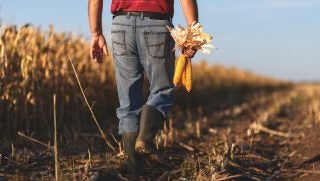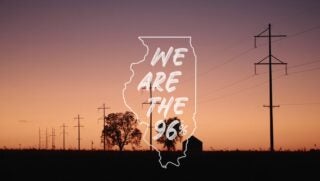“If you ate today, thank a farmer.”
Farmers are pretty awesome when you think about. We literally grow food to feed the world. When millions of Americans sit down to dinner every single night, they are consuming the food that we planted, grew, nurtured, and harvested. It is a big responsibility and a big honor to produce such an important part of our lives.
But farmers are only one part of the equation.
There are countless others that are involved in agriculture other than farmers. The American Farm Bureau Federation estimates that roughly 15 percent of the United States’ economy is connected to agriculture. When we discuss issues around food, usually the conversation focuses on farmers. That is understandable, but there are so many others involved. It would be remiss not to mention everyone else working in agriculture, and certainly wrong not to appreciate their efforts to support our food supply.
Our farm certainly requires help from those not directly working on the farm, even though we only do row crops now. On our 2,000-acre farm, we employ a part-time driver to haul our corn and soybeans to market. Seed salesmen regularly visit our house. Our crop protection specialist helps us make decisions about what chemicals to use. We have several agronomists who we consult with throughout the growing season. We know the mechanics and parts salesman down at the John Deere store. Our crops will eventually be taken to either the granary or ethanol plant that is fully staffed with workers. This summer we had a crew of guys put up a new grain bin.
It takes a lot more than just the farmer and his family to keep the place running.
Even before those seeds can be sold, they have to be grown. Countless scientists and lab assistants are working to create new hybrids and genetically engineered varieties. Research and safety testing is done so we know exactly what qualities those seeds will provide to the farmers who purchase them.
After the crop is grown and harvested, there are even more people involved in getting dinner on the table. Grocery stores have produce managers, delivery people, shelf stockers, and inventory takers. It takes people to process our food and prepare it for things like cereal, noodles, and crackers. Butchers will have to take that hog and turn it into bacon. Regulators will make sure that the food is safe. Chefs will prepare the food, and wait staff will bring it to the table.
Of course, that all assumes that the crop is produced, sold, and eaten domestically. For imported crops, like bananas, there is another whole group of people working to make contacts with foreign farmers, organize delivery, and make sure the food makes it to the grocery store before getting rotten.
Although most people may not actually know a farmer personally, I am willing to bet they have met people indirectly involved in food production. While I would be more than happy for farmers to get all the credit for growing food and feeding the world, we would not be able to do it without all the other parts of the economy that work with us.
So, let’s take a minute to recognize and appreciate the hard work and dedication by all of those people, other than farmers, that work in agriculture every single day. It takes all of us to get food from seed, to the field, and on our tables for dinner.
If you ate today, thank a farmer … and a whole lot of other people.
Amanda Zaluckyj blogs under the name The Farmer’s Daughter USA. Her goal is to promote farmers and tackle the misinformation swirling around the U.S. food industry.



